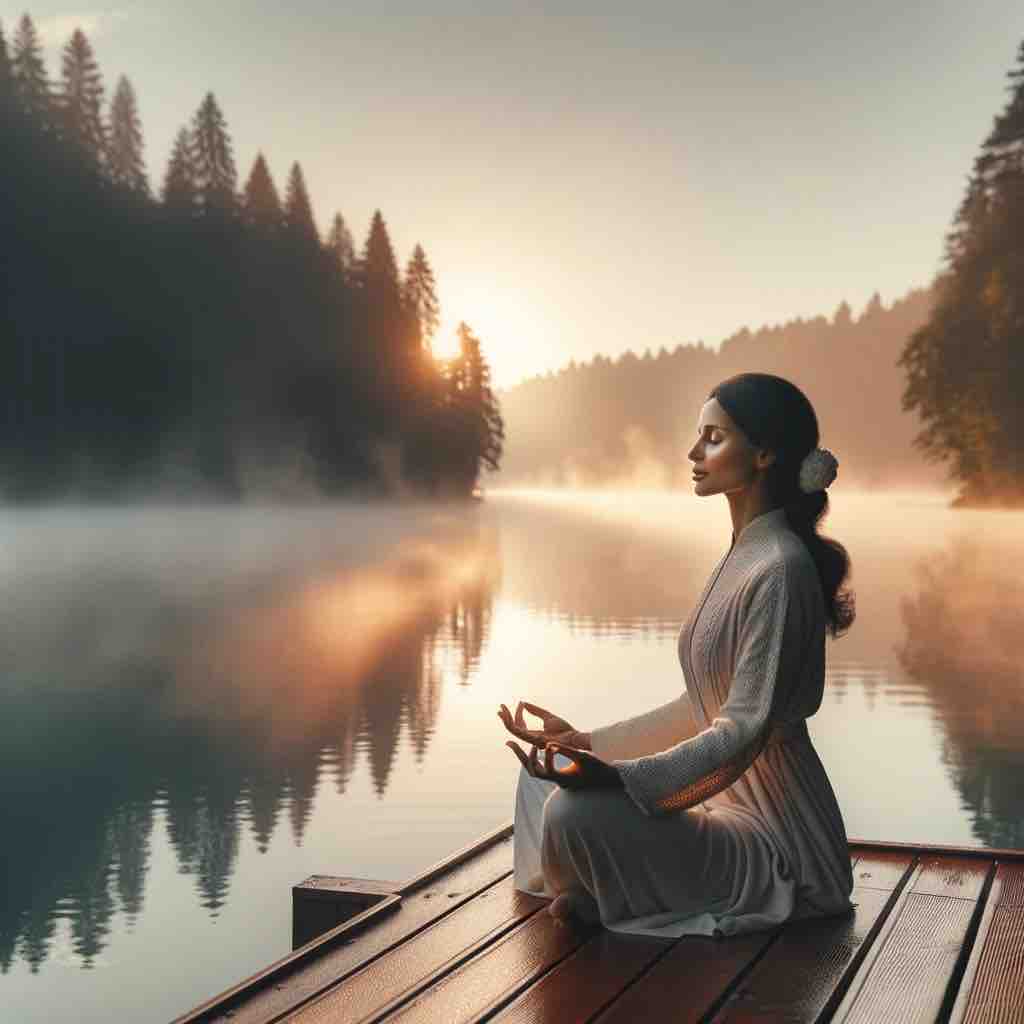
“Breath is the king of mind.” – B.K.S. Iyengar
In the realm of yoga, pranayama is not merely a practice but a sacred art. It is the conscious awareness of breath, the life force that sustains our being. B.K.S. Iyengar, a pioneer in bringing yoga to the West, offers profound insights into the practice of pranayama and its symbiotic relationship with meditation.
The Vital Spine: Foundation of Pranayama
The journey into pranayama begins with the spine. Iyengar asserts, “The root for good pranayama is the spinal column.” An alert spine is the conduit for pranayama, allowing the breath to flow freely and invigorate the body. This alertness is not just physical but a state of heightened awareness that primes the body for the practice of breath control.
Inner Vibrations: The Subtleties of Breath
Iyengar delves into the nuances of the inner body, explaining how the interior spine must stretch and vibrate without jerks. This vibration is akin to a finely tuned instrument, resonating with the rhythm of life. It is this internal steadiness that paves the way for a pranayama practice that can truly harness the body’s subtle energies.
The Energy Reservoir: Unlocking the Side Chest
In pranayama, the side chest becomes a reservoir of energy. Iyengar describes how proper alignment and opening of the side chest can uplift the spirit and combat states of depression. This “shore of energy” is crucial for maintaining emotional balance and is a testament to the transformative power of yogic breathing.
The Mind’s Temple: Gateway to Meditation
Pranayama is the opening of the temple doors of the mind. Iyengar uses the metaphor of a temple to illustrate how pranayama prepares the mind for meditation. By ‘leasing the temples,’ or releasing tension in the temples of the head, we create a pathway for the mind to journey inward, setting the stage for deep meditation.
From Active to Passive: The State of Meditation
The ultimate goal of pranayama, according to Iyengar, is to reach a state of passive reflection—meditation. It is not an active process but a surrendering, a letting go that allows one to immerse in the stillness of being. Pranayama, therefore, is not just a precursor but an integral part of meditative practice.
The Divine Trinity: Brahma, Vishnu, Shiva in Breath
Iyengar’s explanation of pranayama is deeply rooted in spirituality. He correlates the act of breathing with the Hindu trinity—Brahma, Vishnu, and Shiva. Inhalation (Puraka) is creation, retention (Kumbhaka) is preservation, and exhalation (Rechaka) is destruction. This cycle mirrors the rhythm of the universe, encapsulating the essence of life in each breath.
G.O.D. in Every Breath
The acronym G.O.D. encapsulates the cycle of breathing: Generating force, Organizing force, and Destroying force. This simple yet profound understanding of Puraka, Kumbhaka, and Rechaka provides a framework for practitioners to approach pranayama with reverence and depth.
Credit: Doroshenko YOGA 🇺🇦 on YouTube
Through the lens of B.K.S. Iyengar, pranayama is not just a technique but a gateway to a deeper understanding of the self and the cosmos. It is a practice that demands attention, respect, and a willingness to delve into the layers of the self.
For those who wish to explore the interconnectedness of yoga and its capacity to bring about inner freedom, the previous post on this subject can provide further enlightenment: Exploring the Depths of Inner Freedom Through Yoga.
Backlink to the original video: BKS Iyengar – Pranayama meditation, iyengar yoga style
FAQs
- What exactly is pranayama and how does it benefit one’s yoga practice? Pranayama is the art of breath control in yoga, which enhances the vital life force energy within, leading to improved mental clarity, emotional balance, and physical well-being.
- How does the spinal column influence pranayama according to B.K.S. Iyengar? The spinal column acts as a central channel for energy flow during pranayama, and its alertness is crucial for the effective practice of breath control techniques.
- Can pranayama help with stress and if so, what techniques are most effective? Pranayama is highly effective in reducing stress. Techniques such as Nadi Shodhana (Alternate Nostril Breathing) and Bhramari (Bee Breath) are particularly beneficial for calming the mind.
- What is the significance of the ‘shore of energy’ in the side chest in pranayama? The ‘shore of energy’ refers to the potential space in the side chest that, when opened through pranayama, can lead to increased vitality and resistance to negative emotions.
- How does pranayama prepare the mind for meditation? Pranayama calms the nervous system, steadies the breath, and opens the ‘temple doors’ of the mind, creating the right conditions for deep meditation.
- What are the spiritual aspects of pranayama as taught by B.K.S. Iyengar? Iyengar teaches that pranayama is not just a physical practice but a spiritual one that aligns with the cosmic rhythm, mirroring the cycle of creation, preservation, and destruction.
- How often should one practice pranayama to see benefits? Consistency is key in pranayama practice. Daily practice, even if for a short duration, can lead to significant benefits over time.
- Are there any contraindications for practicing pranayama? Certain pranayama techniques may not be suitable for individuals with respiratory issues, pregnant women, or those with high blood pressure. It’s always recommended to practice under the guidance of a qualified instructor.
- What role does the breath play in connecting the body and mind? Breath acts as a bridge between the body and mind, regulating the nervous system and influencing mental states, thereby fostering a deep connection between physical and mental health.
- Can pranayama improve athletic performance and endurance? Yes, pranayama can enhance lung capacity, oxygenation of the blood, and focus, all of which contribute to improved athletic performance and endurance.
Blog Tags for the Post
pranayama, B.K.S. Iyengar, yoga breathing, meditation, mental health, stress relief, vitality, spiritual yoga, breathwork, life force, energy flow, yoga practice, mindfulness, emotional balance, respiratory health, yoga philosophy









